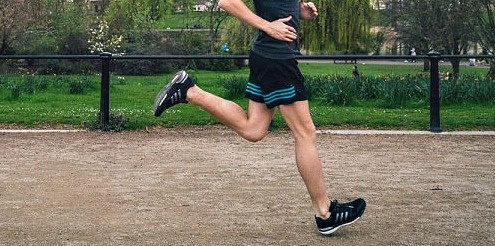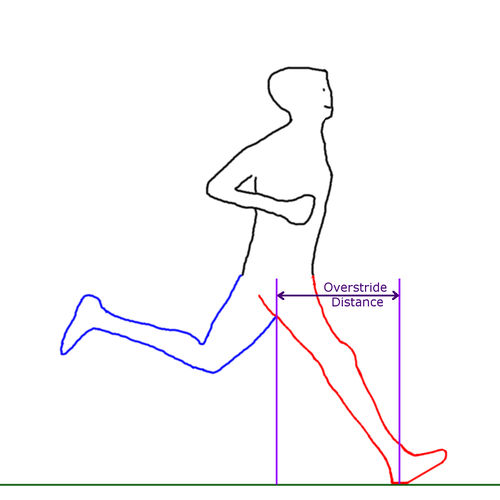Heel strike gets a bad reputation in the running community.
It’s blamed for decreasing running efficiency, hurting running performance, increasing injuries, contributing to global warming….
However, the true culprit is very often not heel strike, it’s stride length – specifically, overstriding.
When you’re overstriding, it biases you toward a heel strike landing so heel strike has become conflated as the problem.
Check out this visual:
The Dangers of Overstriding
Over-striding negatively affects running performance, efficiency, and injury risk in 3 key ways:
- Decreased force absorption
- Your foot, ankle, and knee joints are closer to end-range when hitting the ground
- When your joints are near end-range, your muscles are not able to dampen and attenuate force effectively. This results in a big shockwave through your joints and tissue.
- Increased vertical displacement
- The longer your stride, the higher you are jumping from stride to stride (aka running bounce)
- The higher the bounce, the harder you’re hitting the ground on every step, and the more force that is going through your legs
- Increased braking mechanism
- When your foot lands far ahead of your center of mass (think: your hips), your foot and leg can’t utilize elastic energy effectively. This results in decreased forward propulsion and decreased running efficiency.
- Increased stress on the hamstrings
- The hamstrings play a critical role in decelerating the swing leg immediately before it touches the ground – what is termed “terminal swing”. For this reason, they are already under significant and consistent stress during running.
- The longer your stride, the more lengthened and tensioned your hamstrings are. This can lead to overloading the hamstrings resulting in irritability, pain, and possible injury. As anyone who has dealt with a hamstring injury knows – they aren’t something to be taken lightly and can be notoriously sensitive.
Why Heel Strike Matters Less
In fact, a heel strike that lands close to the center of mass and on a bent knee results in no significant overloading of the knee or increase in braking effect.
Therefore, the first thing I’ll usually look at in gait analysis is stride length. It’s “low hanging fruit” – a change that can be made relatively easily and deliver significant results.
I’ve successfully done it with many runners, and it has cleared up nagging aches and pains while reducing overall injury risk.
In the next blog, I’ll detail the 4 tips that I’ve found to be effective in decreasing stride length.
Stay tuned and as always, thanks for reading.
If you’re looking to improve your running and prevent injury or you’re just fed up with aches, pains, injury, or stress – we’d love to help. Click the button below to discuss your questions & issues with Dr. Rajpal Brar, Doctor of Physical Therapy. Together, we’ll come up with a game plan to reach & surpass your goals.


